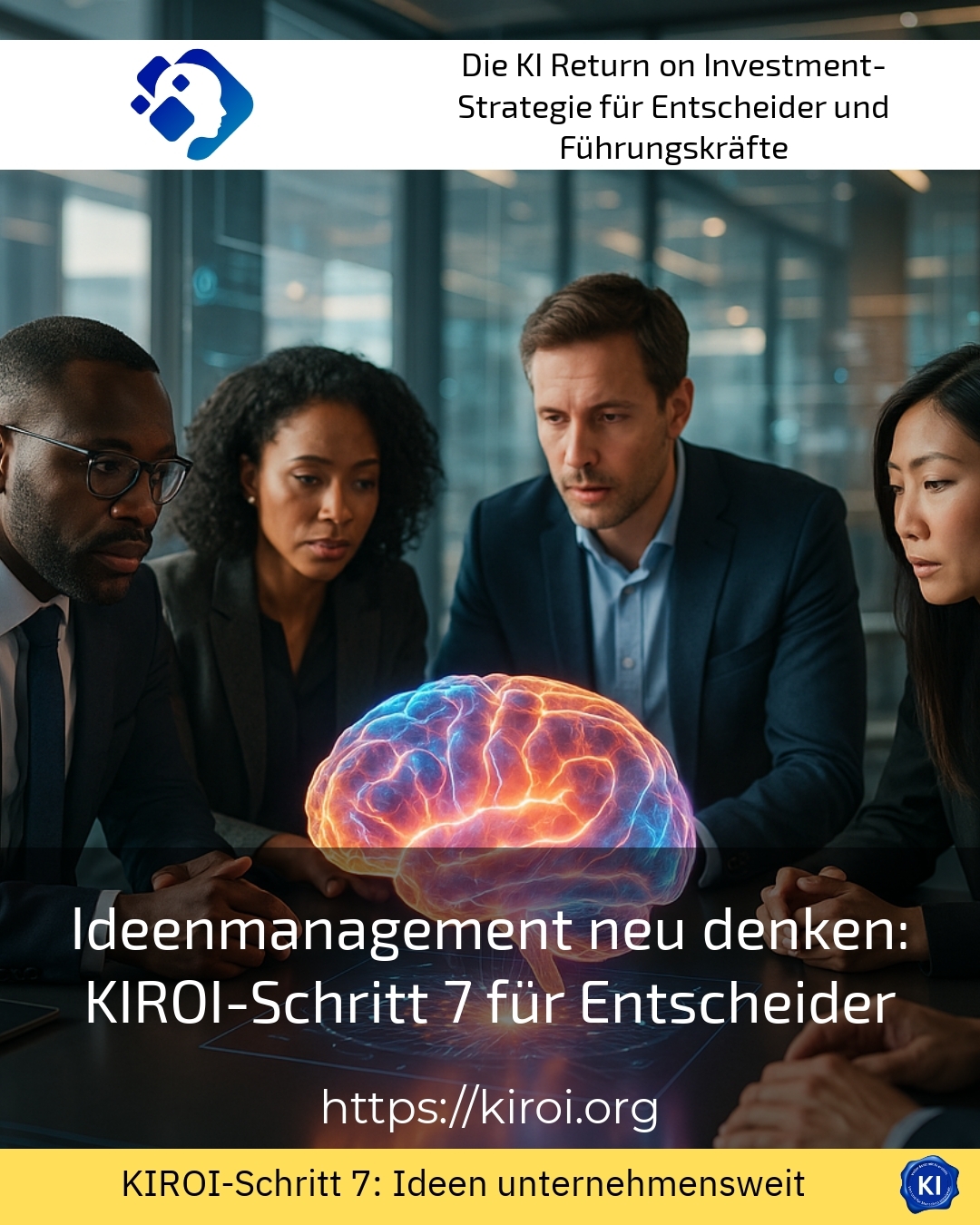Today, idea management is a central element for companies that want to survive in the innovation competition. It is not just a matter of collecting creative ideas, but of systematically supporting them and making them effective throughout the company. KIROI Step 7 in particular represents a completely new understanding of idea management: it promotes collaboration across departmental boundaries and sees the process as a continuous companion. In this way, this approach creates sustainable impetus for growth and innovation.
Idea management as an integrative success factor
As part of KIROI step 7, ideas management is no longer seen as an isolated task. Instead, it is seen as a dynamic process that actively involves all employees and breaks down barriers. In mechanical engineering, for example, moderated workshops are used to shorten development phases and strengthen cross-departmental communication. The teams work more closely together, exchange knowledge and drive innovation forward much faster.
In software development, too, it can be observed how transparent feedback and interlinked processes lead to improved product quality and faster adjustments to customer needs. Retail companies in turn benefit from digital suggestion platforms that link locations and departments. These platforms make it possible to submit ideas easily and implement them efficiently.
The value of such approaches is particularly evident in practical applications:
BEST PRACTICE with one customer (name hidden due to NDA contract) A manufacturing company used KIROI Step 7 to reveal obstacles to the realisation of ideas. Structured workshops significantly improved the transfer of knowledge between departments. This accelerated development cycles and promoted a sustainable culture of innovation within the company.
Technological tools as a lever for innovation
A modern idea management culture increasingly utilises digital tools to make the process transparent and comprehensible. For example, one service company implemented a digital platform that employees could use to record their suggestions centrally. A committee systematically evaluated the ideas. This led to increased participation and accelerated implementation of innovations.
In the automotive industry, such platforms are used to manage and prioritise ideas across different locations. The integration of reporting tools also supports better control and transparent communication of innovation projects.
KIROI step 7: Promote monitoring and implementation
A central aspect of KIROI step 7 is the continuous monitoring of idea processes. This prevents promising proposals from failing due to implementation hurdles. This is often achieved through coaching, which provides practical support for all those involved and provides impetus for improving processes.
In the IT sector, for example, teams report that structured training sessions for dialogue between experienced and new employees increase the progress of innovation projects. Company-based support helps to reduce misunderstandings in the process and focus on promising ideas.
Retail companies rely on targeted communication measures to create acceptance for new ideas. This promotes a positive attitude towards the change process among employees, which is crucial for the success of the project.
BEST PRACTICE with one customer (name hidden due to NDA contract) In an international company, KIROI Step 7 helped to recognise complex barriers to the implementation of innovations at an early stage. Individually adapted coaching made it possible to break down barriers and optimise the transfer of knowledge between the teams. The result was a significantly higher implementation speed for innovation projects.
Practical tips for decision-makers
Decision-makers should understand idea management as a long-term process that is supported by all levels of the company. The following ideas will help:
- Promote cross-departmental collaboration through moderated workshops and digital platforms.
- Rely on transparent communication and continuous feedback to increase employee motivation.
- Use external support and coaching to improve implementation processes in a targeted manner and recognise obstacles.
Idea management is thus transformed from a static process into a living engine for company-wide innovation. Decision-makers create a framework that unleashes creative potential and increases competitiveness.
My analysis
KIROI Step 7 brings a valuable innovation to traditional idea management. It views the process as continuous support that goes beyond the mere collection of ideas. The active involvement of all employees and the removal of barriers make idea management an effective driver of innovation and growth. Examples from the mechanical engineering, software development and retail sectors show how important impulses can be strengthened in a targeted manner.
The combination of digital tools, moderated workshops and coaching creates transparency and increases implementation success. Companies that pursue these integrative approaches demonstrably benefit from a stronger culture of innovation and higher employee satisfaction. This emphasises the strategic value of idea management as a unifying element within the company.
Further links from the text above:
Successfully introducing idea management in the company
Rethinking idea management: KIROI step 7
Unleashing idea management: KIROI step 7
Idea management: Processes
For more information and if you have any questions, please contact Contact us or read more blog posts on the topic Artificial intelligence here.















